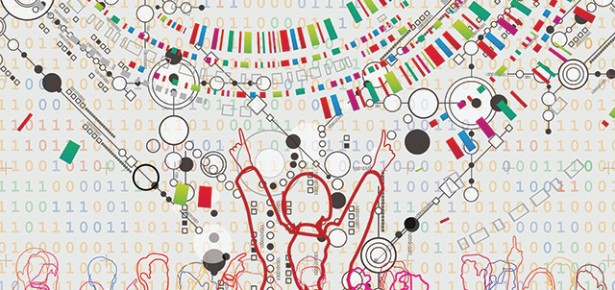
“Moore’s Law” was a prediction made by Gordon Moore in 1965, when he opined that computing power would grow at an ever-increasing rate. Something like “Moore’s Law” is taking place in computational social science today, with the rapid development and availability of new methods, new tools, new software, and new data for the study of social science.
In the past three decades, quantitative research in social science has become much more sophisticated, and much more insightful. When I was a graduate student in the late 1980’s and early 1990’s, the transition from mainframe computing to desktop computing was just beginning; analyzing large and complex datasets was difficult, models were relatively simple, we had little opportunity to test our assumptions, and most of what we could do was constrained by the statistical routines available in commercial statistical packages.
Things are so different today.
Social scientists today have immediate access to new data, for example social media, which they can use to extract many important insights about public debate and political opinion. Archives now house thousands of datasets, and researchers can piece those datasets together to examine behavioral change over time. Software tools like python and R allow open-source development of complex statistical packages, and code-sharing platforms like GitHub and Bitbucket let scholars share their software. Desktop computers are now very powerful, and even more computational power is readily available with parallel processing and cloud computing. We are in the midst of an important revolution in quantitative research in social science.
Computational Social Science, which I edited, tells the story of this revolution. The book provides a collection of essays from a number of the best scholars developing and using these new tools, such as Gary King and Hanna Wallach. These essays give an overview of where we now stand in the evolution of this new approach to social science, as well as a range of perspectives on where this field of study might be heading.
Broken into two parts, the volume focuses on the new tools that are being developed today, and how these tools are being applied to exciting research problems. The new tools discussed in the first part of the book cover innovative ways to study public opinion and political behavior using large arrays of surveys (spanning both collections over geography and time), collecting and analyzing text data, network analysis, multidimensional scaling, and random and fuzzy forests. In the second part, we have applications of these tools to the study of political protest, political representation, government policymaking, and the manipulation of elections.
The bottom line is that we are moving rapidly into a new era of quantitative social science research. While the papers in this volume help define where this field is currently at, there clearly are a number of important new frontiers. Among these are doing a better job at data visualization in our research, and to do a better job training our students about how to visualize data. A second major challenge is how to deal with non-text data — audio, images, and video. An enormous amount of audio and visual data goes online every second, and social scientists need to develop tools and methods to capture and analyze that information. Third, we need better network models, especially models that can deal with complex interactions between individuals, and that can examine interactions between networks. Finally, we face important challenges in how to improve the transparency and openness of quantitative social science; how can we best share data and code to improve our science?
While it’s impossible to predict with certainty where this all might lead, I think that something like Moore’s Law holds for computational social science — the pace of innovation and advance will grow at an ever-increasing rate, and we will see many more advances in methodology in the coming years. This book helps to show how far this field has come, and it helps to chart the course for future research in this area.
Latest Comments
Have your say!